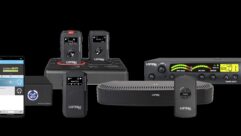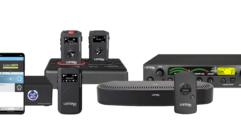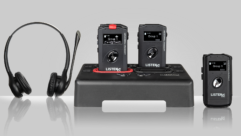Listen Up!
Sep 1, 2003 12:00 PM,
Michael MacDonald
Businesses must make a profit, but profit requirements are more challenging today than ever. Just when you think that you have it wired, a new tax emerges or the insurance premiums double. With all of this profit pressure, sometimes it’s hard to focus on the quality of the work. That said, when it comes to audio, the bottom line is the sound quality.
There are many new tools to analyze the performance of sound systems, tools that are incredibly accurate, inexpensive, and readily available. What more could a systems integrator want? Products that are PC-based, like Smaart Live, are portable and have revolutionized the way integrators measure sound systems in the field. Of course, those tools do not ensure accurate results from the measurements. A substantial investment in training is necessary to properly interpret the results. So what does this give you in the end? Highly accurate, cost-effective measurement systems that can store the measurement results.
So integrators have attained total consciousness, right? The tools to make a sound system sound perfect exist, and with predictive modeling programs such as EASE and measurement applications like Smaart, there’s no excuse for anything but perfect sound. The trouble is, what does perfect audio mean?
Think about this for a moment. When was the last time you went to an event and heard a system that sounded bad? When was the last time someone told you a story about the worst-sounding system that he or she had ever heard? It probably wasn’t very long ago.
Without a doubt, systems integrators and consultants have access to the finest array of sound equipment ever made, as well as the most cost-effective design tools available. Contractors also have portable, low-cost, accurate measurement tools that previous generations would have given blood for.
Yet despite those advantages, sometimes sound systems still sound terrible. What gives?
JUST LISTEN
Because systems integrators have all of these newfangled tools, they are not taking the time and effort to listen to the finished sound system with a critical ear. The industry is putting the systems together and getting lulled into a false sense of security about the real performance that they exhibit. How can that be?
To put it bluntly, the industry is losing chops in the area of critical listening. Contractors have these new advantages to rely upon, but they’re not spending the time listening; if they did, the problems would be discovered and addressed.
So what is critical listening? Only a few years ago, a couple of companies offered to teach contractors how to develop critical listening skills. Those programs taught the participant how to analyze the differences in spectral balance that occur at different listening levels. They addressed the expected changes in frequency response as a listener changes his or her listening position farther and closer to the source. The programs discussed how to listen for destructive reflections as well as issues related to problems with spectral balance, feedback, and ringing. That is just a small sample of what was taught; you get the idea.
One of the biggest issues related to evaluating a sound system’s performance is that no one seems to listen to music anymore. I can remember when many contractors had some very tweak systems at home that they would listen to for hours every week. How great was that? Those were great systems that played the best audiophile discs available. In the process, folks calibrated their ears and really had a good idea of what good sound was. Without a reference system — and putting in the time to calibrate their ears to it — engineers today risk developing the needed perspective to evaluate the quality of these systems.
YOU GOTTA MOVE
One issue has not changed in years: the concept of movement. Contractors often begin to commission a system and never take the time to really move throughout the listening area in the venue. Every contractor has heard systems that were well tuned at the mix position but that exhibited poor performance in other areas of the room. The best ear and analyzer cannot evaluate performance throughout the room if they never move to different locations.
You might say that you spend a lot of time listening to systems and that you do not see a problem. That’s great. But for many companies, listening is a lost art, a skill that can reveal a lot about system deficiencies. So remember to listen. It’s a powerful tool in your arsenal toward creating quality sound systems.
Michael MacDonaldhas been involved in the professional audio industry for more than 20 years and is the principal of Pilot Business Strategies, a consulting firm for product marketing and business development issues. He can be reached at[email protected].









